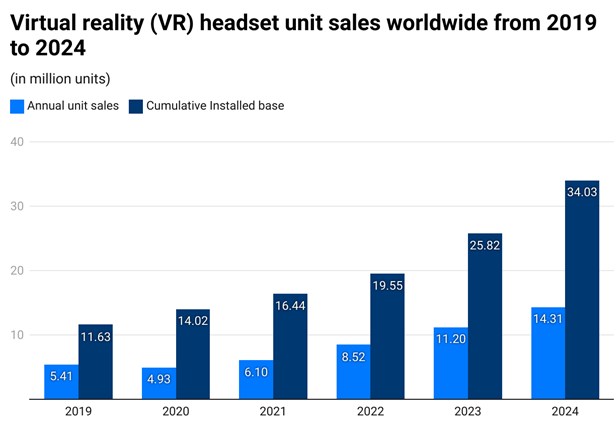The bloodsucker. One of the most terrifying mutant foes in the Stalker franchise. Appearing usually as a surprise with a terrifying telltale growl or screech, the creature cloaks itself, attempts to flank you, then rushes with its barely distinguishable invisibility camouflage activated, appearing only at the last second to de-cloak, slash, and then disappear for its next attack. Tactics not unlike hucksters of “new and revolutionary game mechanics and game evolution” use to fleece developers and investors.
“Single-player games are dead,” they screech as they charge. That’s funny; I thought Grand Theft Auto, StarCraft, Cyberpunk, and Stalker were single-player games.
“Multiplayer is the future,” as they attempt another slash. Gee, then, why did Sony just cancel multiplayer game Concord two weeks after release?

The bloodsucker can induce panic, but its pattern is predictable, and once you overcome your fear, you learn to hit it during its charge, sidestep its slash attack, put a few more shots into it, and then prepare for the next attack. The same tactics can be used to avoid being led astray by pundits of the future who have a vested interest in “new and revolutionary game mechanics and game evolution.”
You can see the pattern. “NFTs are the future of gaming,” they screech as you send a flurry of logic their way, asking, “Why are they needed or wanted?”
“Esports are a huge market,” as the slash comes in, but you sidestep the attack and respond, “Then why have almost all the teams gone bankrupt?”
“AI is the future of games,” the creature screams as it makes another charge. This time you have loaded special 12-gauge expandable dart rounds, and the creature skids dead to your feet. Sorry, bloodsucker, you may have a point on that one, but better safe than sorry.
AI is not new
The use of AI in games goes back around 70 years, first being deployed in the 1950s in the game called Nim. Since then, it’s been advanced and deployed more and more and more. So, what’s different now? There is an argument that LLMs and the processing achieved to use them could advance the games market by leaps and bounds. There is an argument that developers will accelerate development using AI code generation and artistic tools.
This is probably true. Maybe not “leaps and bounds” but certainly leaps. Single-player games need immersion to become legendary, and the ability of NPCs to converse beyond limited scripted options does help immersion. AI code generation tools can be trained on quality proprietary code, which possibly instead of replacing a person at a game company, will simply allow the company to increase the amount of content and/or speed up releases. Both are monetizable.
So, will AI drive growth in the 2025 video game market? No, it will not. It will help just as it always has. Meet the new boss, same as the old boss. And the old boss is quality games and consumer access to powerful platforms. Worried that tariffs will reduce the PC gaming market? Consoles could pick up the slack. Worried that graphics cards will become too expensive for the mass market? Intel just released a beastly midrange card for $250. Not to mention Intel, AMD, and Arm integrated GPUs can run console-quality games at 1080p. The modern “grandma’s PC” is a now a potent gaming rig at 1080p.
What 2025 will bring to the gaming market
The new year will be defined by the same thing that has defined the economics of gaming since the beginning of gaming: the desire for better graphics, more immersion, more detail, better colors, better screens, and bigger and better games. Notice I said “economics.” There will always be indie/alternative loyalist gamers who insist that the latest artistic indie title is the biggest achievement in games. It may be, but it does not drive $100 billion of economics.
We believe that advancements in smartphones and mobile games are the biggest influencers of economic growth in gaming. Not so because the mobile game market is all that particularly lucrative. In fact, many would argue it’s completely saturated. Nor is the experience of playing on your phone all that great.
The key here is that mobile gaming acts as a gateway to the “big leagues” of consoles and PCs. But don’t just take my word for it. Let’s see what the all-knowing Google AI says about it: “As mobile gaming grows in popularity, a trend is emerging where many mobile gamers are transitioning to playing on PC and consoles, often due to the desire for more complex gameplay, better graphics, and a more immersive experience that can be achieved on these platforms, with some developers even actively porting their popular mobile titles to PC and consoles to cater to this expanding audience.”
AI said it, so it must be true. But seriously, I challenge anyone to come up with a customer more lucrative than a console or PC gamer. Not only do they spend money on the games—upwards of $70 per title—but they buy platform ranging from $400 to $10,000. TVs and displays specifically for better gaming. Entire sound systems with subwoofers and high-end headphones, chairs, lighting, better controllers and mice, PC components, etc. This is where the enthusiast gaming market is.
We cannot fail to mention VR/XR/AR. This was a massively overhyped area of gaming; however, it is not going away and is getting better and better and growing. VR/XR/AR is the domain of the enthusiast gamer but economically still in its infancy.

In conclusion, the gaming market will be healthy in 2025. Even if macroeconomics is a challenge. The reason is simple. Enthusiast gaming is the best home entertainment activity in the world, and that’s something even a dead bloodsucker can understand.